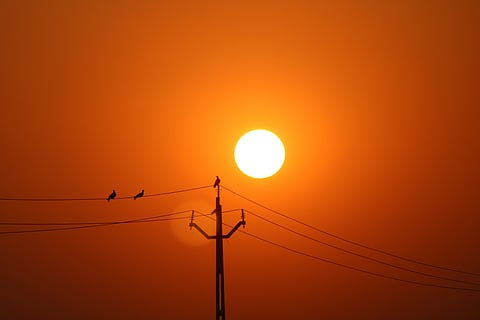Weekend Reads | How Prepared Is the PNW for Extreme Heat?
by Kevin Schofield
For six days in late June of 2021, a “heat dome” developed over the Pacific Northwest, including much of British Columbia, Washington, and Oregon. Temperatures soared into the 100s here in Seattle, while reaching 116 in Portland and 121 in Lytton, British Columbia. This weekend’s read is an interview in the Journal of the American Medical Association with two leaders of the local responses to the heat dome in Seattle and Portland: Jeremy Hess and Andrew Phelps. They reflect on the heat dome, how the cities responded, and lessons learned for future emergency responses to extreme heat events.
One of the interesting aspects of the heat dome was that it was well predicted several days in advance: We knew it was coming. That said, because it sounded so absurd — forecasters were predicting temperatures 40 degrees above the seasonal norm — many people didn’t take it seriously. Also, with no contemporary precedent, officials didn’t know how well the public infrastructure would withstand the extreme heat. Could the electrical grid manage higher energy usage for air conditioning? Would emergency departments manage the increased demands and have enough supplies on hand? Could the public health infrastructure provide enough cooling centers and protect vulnerable people from the effects? And let’s not forget that this occurred during the height of the COVID-19 pandemic, when public health officials were discouraging people from congregating together in places such as, well, cooling centers.
Hess and Phelps point to some of the unique results of an extreme heat event in an area not accustomed to them. In addition to more cases of heat stroke, the area saw more drownings as people flocked to the water to try to cool off. Emergency departments also experienced more cases of contact burns from people walking on hot pavement, and an increase in new onset of kidney disease and kidney failure as a result of the heat. That said, most ERs weren’t inundated with patients; Hess and Phelps note that most of the worst outcomes played out in people’s homes instead of in hospitals. Portland saw around 100 heat-related fatalities, the overwhelming majority of which were older white males. “[A]nd when you think about folks that don’t always seek help or medical attention when they’re not feeling well, that’s the demographic,” said Phelps.
Of the in-home fatalities, 15% were in places with air conditioning installed. However, they learned that many people living on fixed incomes thought they couldn’t afford the higher utility bills if they turned on the air conditioning, so they left it off — and suffered the consequences of the extreme heat.
Hess and Phelps also point out that getting the public health messaging right is a challenge, and it requires knowing the community and which kinds of messages will drive people to action. Public health departments encouraged community members to “check on your neighbors,” but in retrospect, that wasn’t a forceful enough message. Phelps suggests that they should have pushed harder: “go and put eyes on your neighbor, on your family member, on your co-workers. If they do not have a way to stay cool, if they don’t have air conditioning, get them someplace where they can cool off for a little bit. This level of heat will kill you if you don’t find a way to cool off and stay cool.”
Hess suggests that the heat dome event changed his thinking so that he no longer says that heat-related deaths are “entirely preventable” during extreme events. “I don’t think we generally do that anymore. And I think that’s appropriate because it’s actually very difficult to fully protect the population against extreme heat.” Hess goes on to say that we should all “really respect how hazardous these events are and how complicated it can be to protect people who are vulnerable and susceptible for any number of different reasons.” He notes that even though the June 2021 heat dome was predicted in advance, it still provided only a short time frame to prepare a large response for a community largely unfamiliar with the hazard. And he contrasts the response in western Washington and Oregon with places (such as Phoenix, or even eastern Washington) where extreme heat events are more common and people know what to do.
In addition to the importance of communicating messages that reflect the demographics of the community, some key lessons that Phelps and Hess highlight include providing targeted financial support for low-income households to allow them to install air conditioning in their homes and to get discounts on their utility bills; prioritizing efforts to protect the people most vulnerable to extreme heat; and investing in improvements to the “built environment” of a community to make it more resistant to extreme heat, such as by building out more green spaces.
Even as it fades in our memories, it’s important that we learn and improve our ability to respond when extreme heat events happen. As Phelps points out, “this is not a short-term problem. And this is certainly not an anomaly or an outlier. In my mind, it’s an indicator of things to come.”
Kevin Schofield is a freelance writer and publishes Haftacook. Previously he worked for Microsoft, published Seattle City Council Insight, co-hosted the “Seattle News, Views and Brews” podcast, and raised two daughters as a single dad. He serves on the Board of Directors of KUOW, and he volunteers at the Woodland Park Zoo.
Help keep BIPOC-led, community-powered journalism free — become a Rainmaker today.


